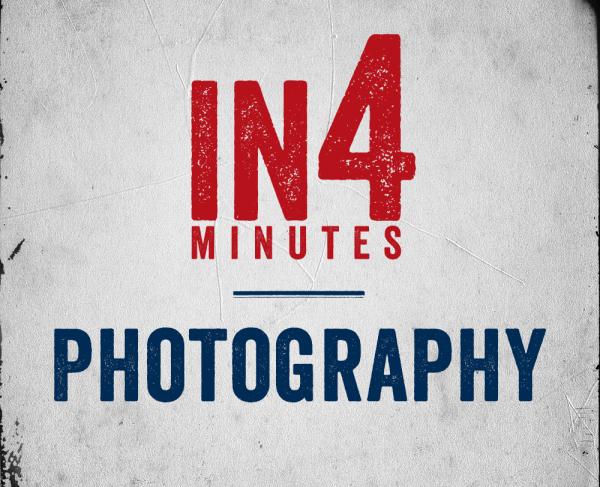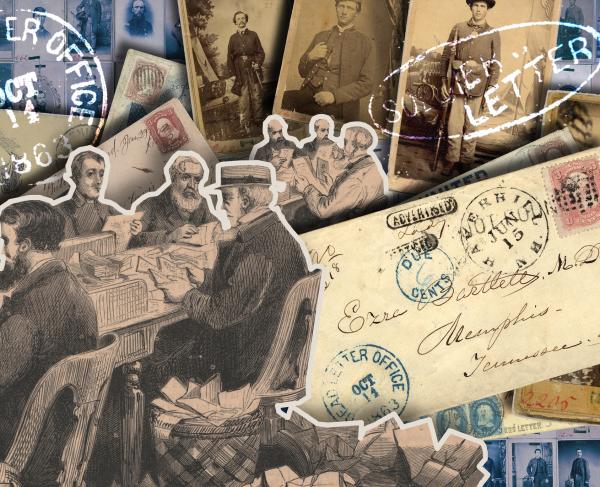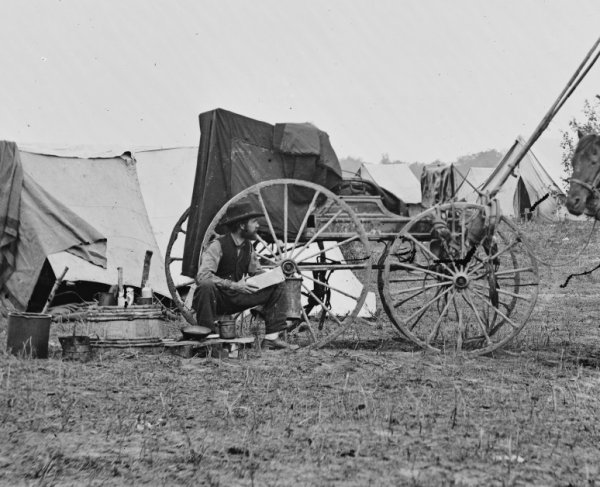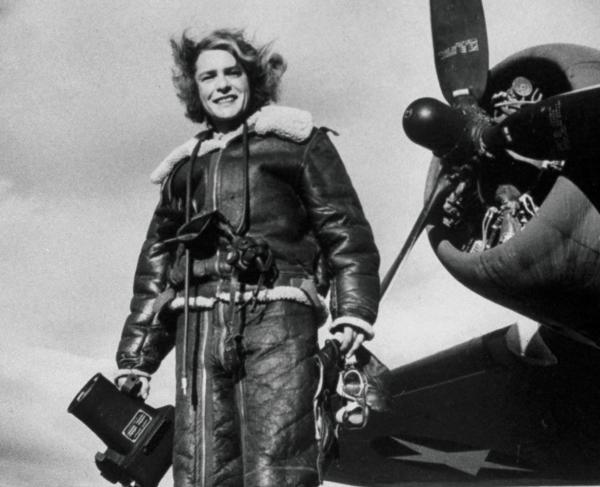Origins of Photojournalism
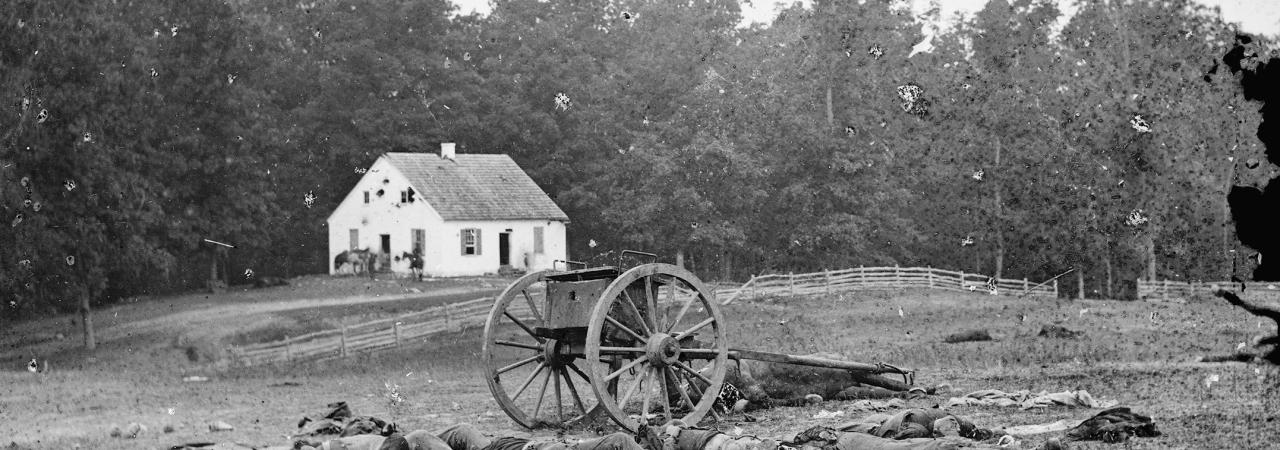
Alexander Gardner's famous photo of Confederate dead before the Dunker Church on the Antietam Battlefield in Sharpsburg, Md., 1862.
Although the history of photography begins in antiquity with the projection of images via camera obscura, the first, unsuccessful attempts to permanently fix those images didn’t occur until the 18th century. Louis Daguerre later introduced the daguerreotype, the first commercially viable photographic process, in 1839. It was improved upon steadily into the early 1860s.
While photographs of earlier conflicts do exist — notably, the work of British photographer Roger Fenton during the Crimean War of the 1850s — the American Civil War is considered the first major conflict to be extensively photographed. For the first time in history, citizens on the home front could view the carnage wrought on battlefields hundreds of miles away from their home and hearth. These images stripped away much of the Victorian-era romance around warfare.
To capture images on a battlefield was an exacting, cumbersome and time-consuming process. In 1861, the newest technology was wet-plate photography, a process in which an image is captured on chemically coated pieces of plate glass.
A photographer began by bringing his wagonload of equipment — which also served as his darkroom — onto the field and setting up the bulky camera. He mixed a dangerous assortment of chemicals, including ethyl ether and acetic or sulfuric acid, by hand. The resulting substance, known as collodion, was applied to the large glass plates that became the negatives for his images, sensitizing them to light. In that mobile darkroom, the plate was then immersed in silver nitrate, placed in a light-tight container and inserted into the camera. Next, the cap on the camera was removed for two to three seconds, exposing it to light and imprinting the image on the plate. Replacing the cap, the photographer immediately took the plate, still in the light-tight container, to his darkroom, where he developed it in a solution of pyrogallic acid. After washing and drying the plate with water, the photographer coated it with a varnish to protect the surface. This process created a plate glass negative, from which prints could be made on paper and mounted.
An estimated 70 percent of all Civil War documentary photographs were shot as “stereoviews” — the 19th-century equivalent of 3D. These were made using a twin-lens camera that captured the same image from two separate lenses, in much the same way that two human eyes capture the same image from slightly different angles on the head. The images were developed using the same wet-plate process, but stereoscopic photography produced two of the same image on one plate glass. Once processed, the photographer would print the paired images onto a viewing card that could then be easily inserted into widely available viewers that created a 3D image. Over time, this type of presentation has been forgotten. Today, we can format images digitally to be viewable with standard red-blue 3D glasses.
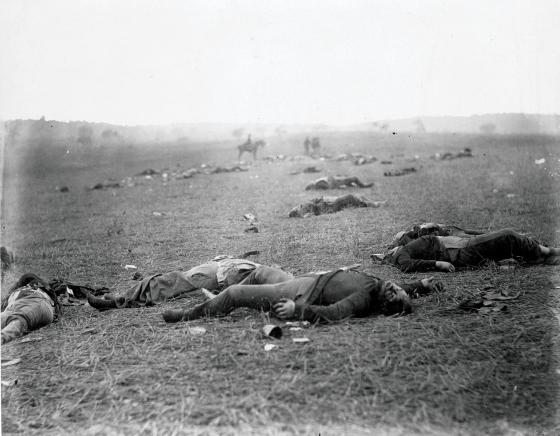
Although Mathew Brady is the most famous photographer of the era, by the time of the Civil War, his vision was poor and he did little work in the field, employing others to visit battlefields on behalf of his studio. Unfortunately, many photos have been incorrectly credited to him over time instead of the actual artist, including images by Alexander Gardner and Timothy O’Sullivan.
Early in the war, photographers captured primarily camp scenes, not what today we think of as photojournalism. Then, during the spring of 1862, when at least three photographers traveled to Virginia to capture scenes related to what we now call the Peninsula Campaign and the Seven Days’ Battles.
Between April and June 1862, James Gibson captured more than 100 documentary photos, including at least 16 at Yorktown, as Union forces besieged the famed colonial town for nearly a month. With assistant George Barnard, Gibson exposed numerous plates at the recent battlefield of Fair Oaks, also known as Seven Pines, May 31–June 1, 1862.
Victory, or in the case of Fair Oaks, not being driven away, was a crucial element in the recipe for securing battlefield scenes — if the enemy won, photographers from the losing side lacked access to the scene of conflict. The steady Union retreat throughout the Seven Days’ Battles precluded post-battle photographs, although Gibson capture an incredible documentary image of wounded soldiers the day after the Battle of Gaines’ Mill.
An ideal opportunity for battlefield photographs presented itself with the Battle of Antietam, the culminating battle of Confederate Gen. Robert E. Lee’s first, full-scale invasion of the North. Fought on September 17, 1862, it remains the bloodiest day in American history. The strategic Union victory offered President Abraham Lincoln the opportunity to issue his preliminary Emancipation Proclamation.
Located close to his Washington headquarters and in Union-held territory, it was an ideal scenario for Alexander Gardner, a photographer in the employ of Mathew Brady. He arrived at Antietam two days after the fighting and spent four days capturing images of the carnage.
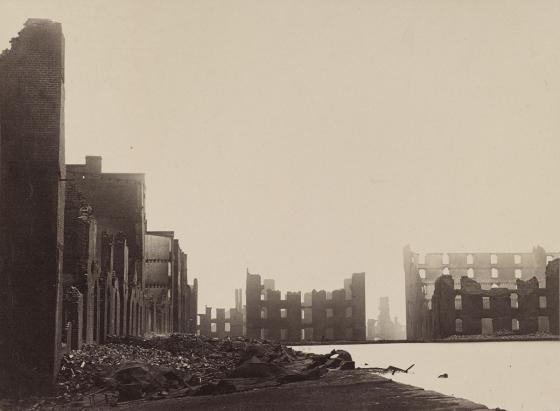
The images were displayed at Brady’s New York studio just a month after the battle and caused a sensation. “Mr. Brady has done something to bring home to us the terrible reality and earnestness of war,” wrote the New York Times. “If he has not brought bodies and laid them in our dooryards and along the streets, he has done something very like it.”
A year later, Gardner — now operating his own studio — was at Gettysburg, capturing images of slain Confederate soldiers awaiting burial. Photographic historians have shown that in at least one instance at that site, Gardner posed a body to achieve greater pathos in his image; however, there is not sufficient evidence to indicate this was common practice for him or others.
The long exposure times required on images meant that Civil War-era photographers could not capture the action of battle itself and had to confine their work to its aftermath. But the powerful images they made were sufficient to change the public discourse on the nature of war. Even today, the views captured by combat photographers have the power to shock audiences, to move and educate them.
